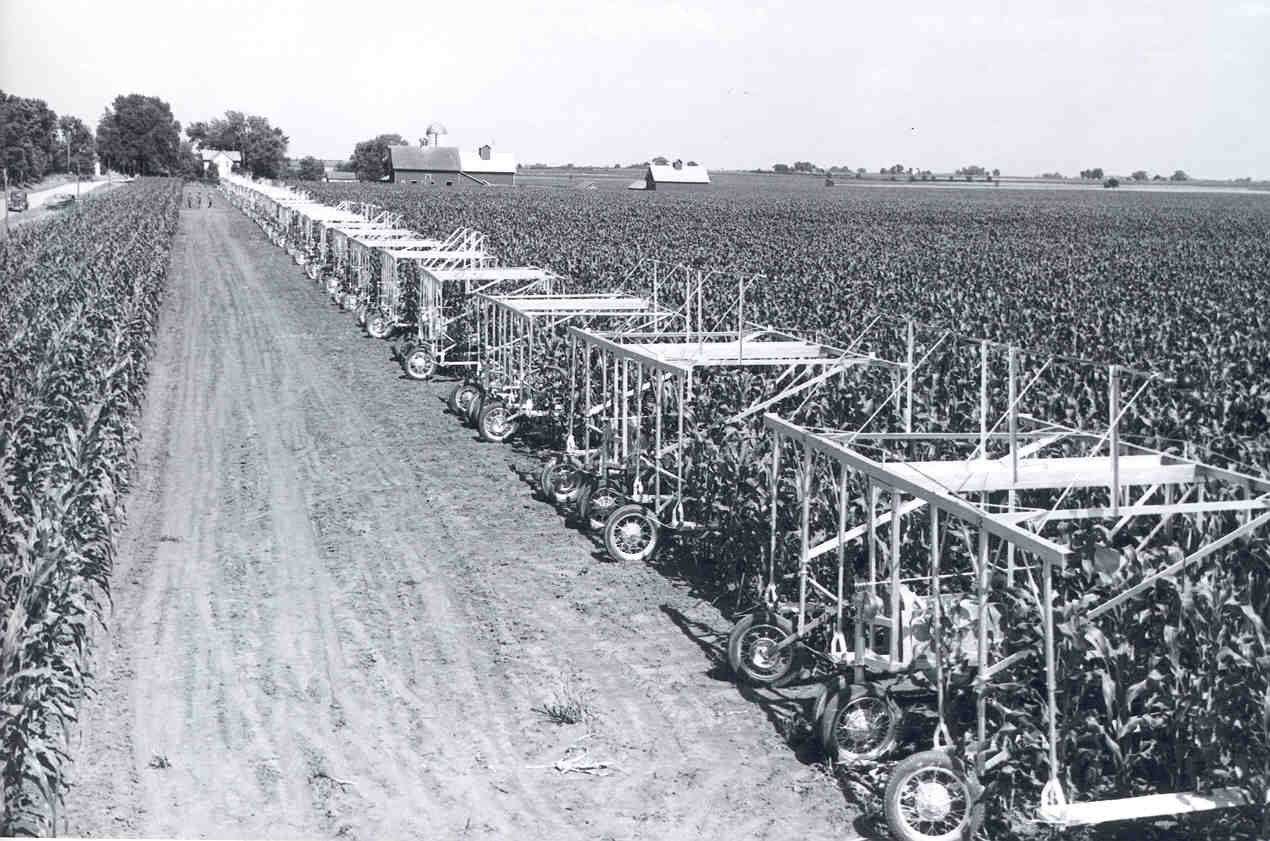That success finally came is due to a persistency
and determination that is characteristic of Lester. By 1938, his corn breeding
had produced such outstanding results that Life Magazine sent photographers
and gave him a double-page spread in their August 29 issue that year. Thie
same month the Country Home magazine used for their leading article
a story about Lester and his work, entitled "Bagging a Million," which
Pfister thinks must have referred to bushels and not dollars of profit
at the time, but which drew enough attention to be reprinted by Readers
Digest with a circulation up in the millions. Pfister has perhaps had
more publicity than any other native El Pasoan excepting Bishop Fulton
J. Sheen.
Lester also worked closely with M. L. Moser in his earlier days, and
with George Krug and his open-pollinated strains. The financial depression
of the thirties handicapped his work tremendously, for in addition to the
cost of his experiments, he had recently purchased his first 160-acre farm,
where his home is today. But by 1935 Pfister had his famous 360 and 366
strains on the market and each year for several years the sales doubled.
Dr. Holbert had aided him in producing these strains by adding his own
successful single cross called A by Hy.
After this success, Lester began the gradual expansion of his facilities
and farmland, and today he and his family own some 1,200

The Pfister Company’s detasseling machines at the Lucille Holt farm.
Page 281
Go to previous page
Go to next page
Go to El Paso Story gateway page

